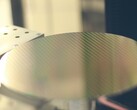If rumours coming out of China are accurate, SMIC has successfully manufactured its first-ever 5 nm chip for Huawei: the Kirin X90. It achieved this feat without ASML's cutting-edge EUV machines. The company had to use their less efficient DUV-based counterparts due to trade restrictions. A new report from UDN talks about Huawei's future plans for its semiconductor business.
The Chinese tech giant has started researching a GAA FET-based 3 nm node that is expected to tape-out sometime in 2026. Without any developmental hiccups, mass production should ideally start in 2027. Alternatively, carbon nanotube-based 3 nm chips are also being researched, but there's no word about how far they've progressed.
However, yields will continue to be an issue. The above-mentioned 5 nm node is said to sit at an abysmal 20%, and that figure will only go lower at 3 nm due to the additional complexity involved in DUV multi-patterning. But, that might change if China somehow makes the switch to EUV like TSMC, Samsung, and Intel Foundry.
China has already started working on indigenous EUV machines. X user @zephyr_z9, who is familiar with the Chinese semiconductor scene, says Huawei is actively testing EUV tech, which will supposedly be ready for mass production by 2026. However, ex-ASML engineer @lithos_graphein says that is unlikely because, "ASML's moat is massive and uncontested."
Nevertheless, even if China did have EUV tools at the ready, it wouldn't disclose them publicly. Reportedly, $37 billion has been earmarked for EUV development and any progress will be kept under wraps, like what happened with the Kirin 9010 and its successors.





















